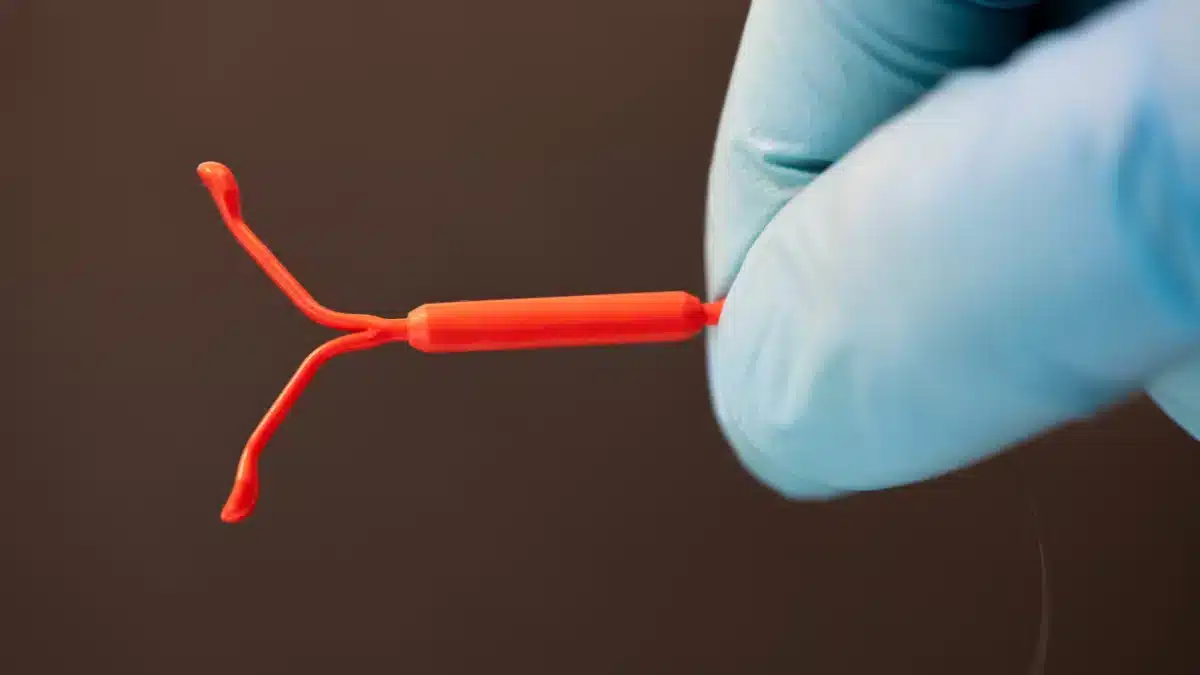Can’t Feel IUD Strings: Understanding Causes and When to Seek Medical Attention
Intrauterine Devices (IUDs) are T-shaped contraceptive devices that are inserted into the uterus to prevent pregnancy.
They have strings attached to them that hang down into the vagina for safe removal of the IUD.
However, occasionally, individuals may encounter difficulty in feeling the IUD strings.
There are various reasons why this may occur, which may be concerning, but every case is not cause for immediate concern.
This article will explore the common causes if you can’t feel IUD strings and when to seek medical attention.
How to check IUD strings
To ensure the IUD is in place, it is recommended to check the strings monthly.
Follow these steps to check for IUD strings:
- Wash hands thoroughly
- Squat or sit down
- Insert index and middle fingers into the vagina until the cervix is felt
- Feel around for the IUD strings
- If the strings feel normal, there is no cause for concern
- If the strings feel longer or you don’t feel the strings, consult with your doctor
Common reasons for missing IUD strings
The reasons why the tips of your fingers cannot feel IUD strings include:
Curled strings
One common reason for the inability to feel IUD strings is the curling or coiling of the strings.
These thin strings can sometimes wrap around themselves, resting against the cervix.
This coiling makes them challenging to reach, and the sensation may be invisible to the touch.
Strings too short

If the IUD strings are cut too short by the healthcare professional during insertion, a person’s fingers are not long enough to reach the strings comfortably.
Fortunately, having short strings does not lead to any signs or symptoms.
IUD expulsion
While rare, IUD expulsion occurs when the device partially or completely falls out of the cervix.
In such instances, the IUD may not be visible in the toilet or underwear, but individuals might experience pain, severe cramping, or notice bleeding or discharge.
Perforation of the cervix or uterus
In extremely rare cases, the IUD may puncture the uterus or cervix during insertion.
The likelihood of perforation is low but increases for women who have recently given birth or are breastfeeding.
Perforation can cause severe pelvic pain, bleeding, and discomfort during sex.
If there is suspicion of perforation, immediate medical attention is necessary to address the issue.
Uterine swelling
IUD strings can retract into the uterine cavity if your uterus is swollen and enlarged. The uterus can get enlarged due to fibroids or pregnancy.
This means that the IUD is not expelled from the body and is still stuck in the uterus.
To assess the situation and find IUD strings, healthcare providers typically use ultrasound imaging.
When to see a doctor
If you cannot locate your IUD strings, consult with a healthcare professional and use a backup form of birth control until the issue is addressed.
You should schedule an appointment if:
- Strings are recoiled or short
- Your periods, especially with hormonal IUDs, return to their previous level of flow, indicating a potential issue
- You have a fever and chills
- You get long-lasting or severe cramps
- There is an unusual odor from the vagina
- You experience abnormal bleeding or discharge
How doctors locate IUD strings

There are many non-invasive methods through which a doctor can locate an IUD string:
- Pelvic exam: The doctor will do a pelvic exam to feel if the IUD strings are still present. During this examination, they may use a long cotton swab or cytobrush to navigate the vagina and cervix in search of the IUD strings
- Colposcope examination: If the strings are not found during the pelvic exam, the doctor may use a magnifying device called a colposcope to get a closer and more detailed look
- Ultrasound: The doctor may opt for an ultrasound if the strings cannot be located through the above methods. This imaging technique can help visualize the position of the IUD within the uterus
- X-Ray: If necessary, an X-ray may be performed to ensure that the IUD has not perforated the uterus and moved into the abdominal cavity
To know how the IUD with missing strings can be removed, read How to Remove an IUD if Strings are Missing: Step-by-Step Guide for Safe Removal.
After locating the IUD
If the IUD is in the proper position and the patient wishes to keep it, no further action may be needed.
However, if the IUD has moved, the doctor will typically remove it during the appointment.
The removal process involves dilating the cervix, which can be done with Misoprostol.
Additionally, the doctor may inject a numbing medication into the cervix or apply a topical numbing gel if more pain relief is required.
The doctor will use instruments, such as threaded retrievers or clamping forceps, to reach into the uterus and carefully remove the IUD.
If the IUD has perforated the uterine wall, a surgical procedure like hysteroscopy removal in a hospital setting may be necessary.
Conclusion
The inability to feel IUD strings can be attributed to various factors, ranging from curled strings
to rare occurrences like IUD expulsion or perforation of the uterus or cervix.
While checking IUD strings regularly is generally recommended, encountering difficulties should not induce immediate panic.
Monitoring for signs such as unusual bleeding, pain, or a change in menstrual flow is essential, and any associated symptoms like fever, chills, or an unusual odor should not be ignored.
Doctors have various methods to locate IUD strings, including pelvic exams, colposcope examinations, ultrasounds, and X-rays if necessary.
If a displacement or complication is identified, the removal process can often be managed during a medical appointment.
It is important to check for IUD strings every month, and if you feel any problem with the IUD, contact your doctor.
Frequently Asked Questions
What does it mean if you can’t feel your IUD strings?
If you can’t feel your IUD strings, it may indicate several potential issues. Common reasons include curled or coiled strings, strings cut too short, or, in rare cases, the expulsion or perforation of the IUD. It is crucial to address this promptly by consulting with a healthcare professional.
Should I go to the doctor if I can’t feel my IUD strings?
It is advisable to consult with your doctor if you can’t feel your IUD strings. Regular self-checks are recommended, and seeking medical attention promptly is crucial if you encounter difficulties or notice any changes. Your doctor can do a pelvic exam or ultrasound to locate the IUD.
Is it bad if a guy can feel your IUD?
A partner should not be able to feel the IUD. If a guy can feel the IUD strings, it may suggest they are longer or have moved out of position. While this may not be harmful, you should consult a doctor to ensure the IUD is properly positioned.
What are the symptoms of IUD perforation?
IUD perforation, though rare, can cause severe symptoms. Common signs of IUD perforation may include severe pelvic pain, bleeding, discomfort during sex, and fever and chills. If you suspect IUD perforation, it’s essential not to delay seeking help in the presence of these symptoms.
WowRx uses only high-quality sources while writing our articles. Please read our content information policy to know more about how we keep our content reliable and trustworthy.






